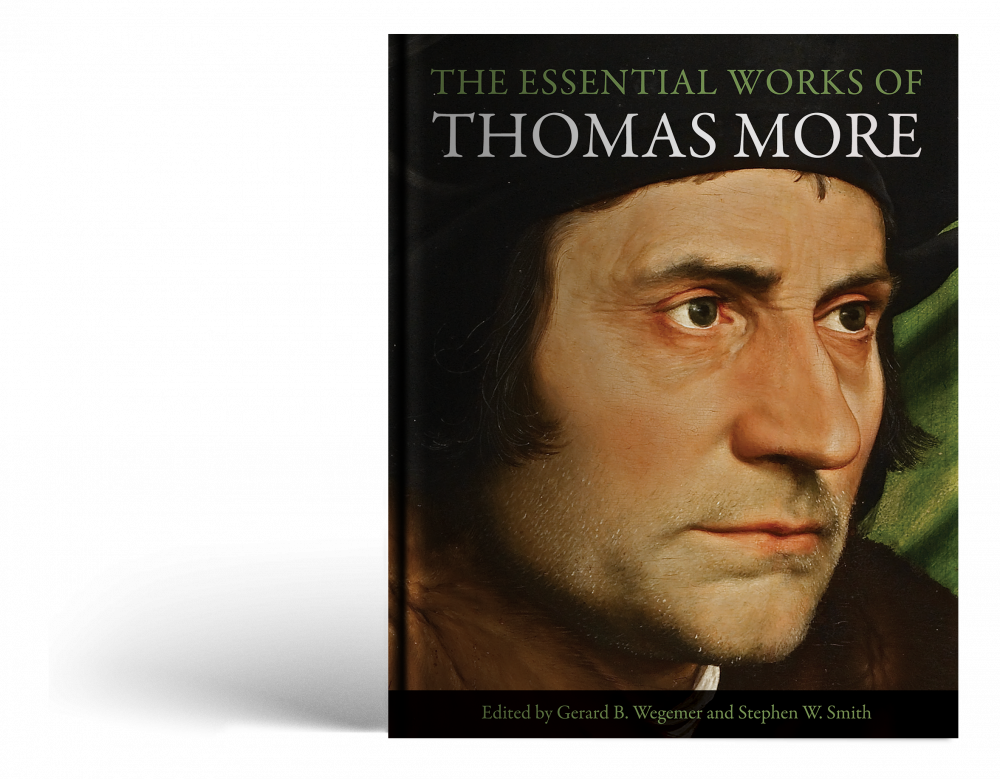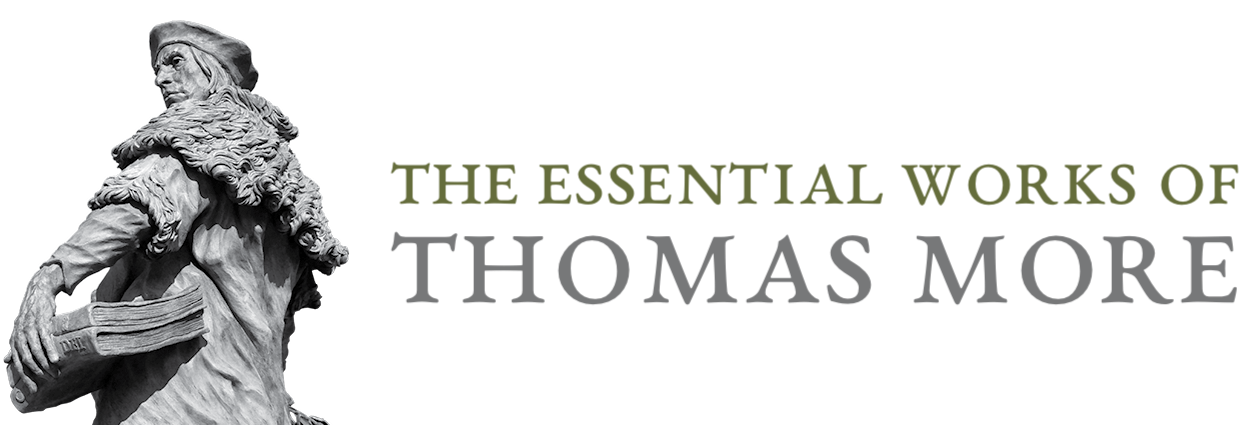
More’s major works collected in one volume and presented in chronological order, with features including: modern spelling and punctuation; searchable e-book option; concise introductions and outlines for each text; ample glosses and explanatory notes; 100 illustrations; newly commissioned translations; a reconstructed text of More’s historic trial; and a rich appendix of the earliest biographical accounts of More, including Sir Thomas More, on which Shakespeare collaborated.

The Essential Works of
Thomas More
Yale University Press, 2020
More’s major works collected in one volume and presented in chronological order, with features including: modern spelling and punctuation; searchable e-book option; concise introductions and outlines for each text; ample glosses and explanatory notes; 100 illustrations; newly commissioned translations; a reconstructed text of More’s historic trial; and a rich appendix of the earliest biographical accounts of More, including Sir Thomas More, on which Shakespeare collaborated.
Features
– All major works represented in one volume, in chronological order
– E-book is searchable–all 1517 pages
– Introduction and outline for each work


– Cross-referenced to Yale UP’s critical editions
– Newly glossed and punctuated (19,000+ notes)
-Line numbers on each page for ease of reference and teaching use
– 100 illustrations of art work, first editions, samples of his handwriting, newly commissioned reconstructions (including More’s London), and surprising annotations


– First English translations ever done of More’s first published work: his Lucian dialogue translations
– Reconstruction of More’s trial, based on the most authoritative scholarship available


– Representative selection of the earliest biographical accounts of More from Erasmus, Tyndale, Roper, and others, along with the complete text of Sir Thomas More, the Elizabethan history play on which Shakespeare collaborated with a team of London playwrights.
Additional Features:
– More’s most important letters (some translated for the first time), including 15 recently discovered – 131 in all (Selected Letters had 66; Complete Works had 12)
– Supporting website
- Teaching support materials for each work, including podcasts
- Full texts not included in The Essential Works
- Extensive bibliographies (10,000+ entries)
- Detailed timelines linked to primary sources
- Complete concordances to More’s works
Title page of Utopia:
Bottom: Brutus—the founder of the Roman Republic—witnesses (along with Lucretia’s husband and father,) the suicide of Lucretia after her rape by the tyrant Tarquin.
Top: crucified Christ


What is needed for a good and happy life (multicultural agreement)
Greek, Christ: “Be wise as a serpent, innocent as a dove”
Latin, Horace: “shrewd simplicity and love of doing right”
Hebrew, Psalm 125:4: “Do good, O Lord, to those who are good, to those who are upright in their hearts.”
Title page, Epigrams:
Roman hero Mucius Scaevola holds his right hand in the fire in defiant opposition to King Porsenna who is invading Rome (Livy 2.12).


What More adds to this text is indicated by half-brackets. How More transforms the story is indicated by the Timeline and Contents outline.
At the top of this manuscript page, More writes himself a note asking if the pun he intends (honorarius / onerarius) should be made more obvious.


This side note in the 1557 Works of Sir Thomas More explains that Margaret “took the oath with this excepted: as far as would stand with the law of God.” The bishops took the same “exception” in 1531 in acknowledging Henry VIII as head of the Church in England.



